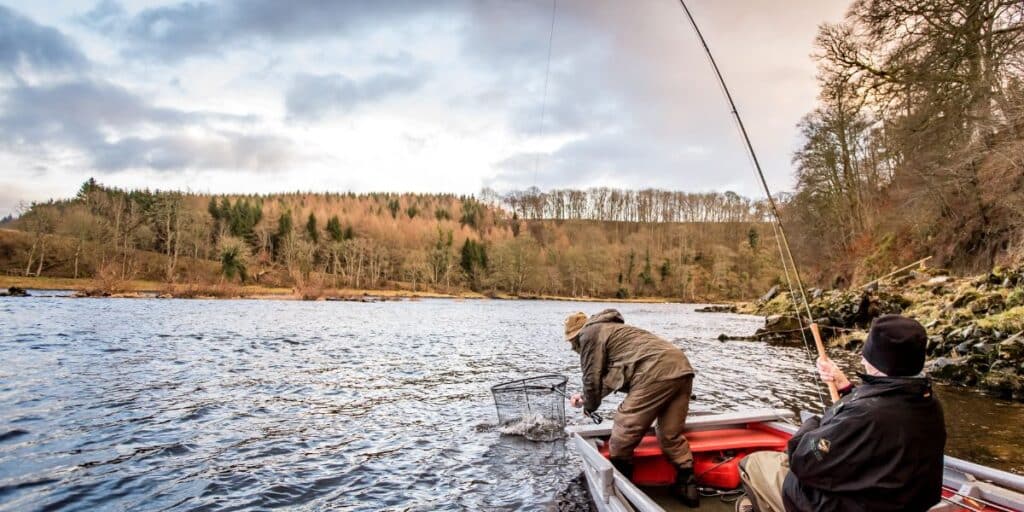Scotland offers some of the best fishing opportunities in the world, and grayling is no exception. The elusive grayling, known for its stunning colours and feisty fighting ability, can be found in Scottish rivers throughout the year. If you’re looking to catch this beautiful freshwater fish, here are some tips and tricks to help you increase your chances of success. Often confused with trout, a grayling has a more elongated body and pronounced dorsal fin.
Graylings are typically found in shallow, clear water and are most active in winter.
Gear and Tackle
The right gear and tackle are crucial when fishing for grayling. A lightweight rod and reel and a small, lightweight net are recommended. It’s also essential to have a good selection of flies, as graylings are known to be picky eaters. Dry flies, nymphs, and small streamers are all effective when fishing for grayling.
Techniques and Strategies
Grayling can be caught using various techniques, including dry fly fishing, nymph fishing, and streamer fishing. Dry fly fishing is particularly effective in summer when graylings are most active on the surface, and nymph fishing is often used in winter when graylings feed on the river’s bottom. Streamer fishing can be effective year-round, especially in spring and fall when graylings are more aggressive.
Best Time to Fish
Grayling can be caught throughout the year, but winter is the best time to fish for them. They are more active during the colder months and are often found in shallower water. Grayling can also be caught during the summer, but they are more challenging to catch as they tend to stay deeper in the water.
Where to Fish
Grayling can be found in rivers throughout Scotland, but some of the best rivers to fish for grayling include the Tweed, the Clyde, and the Dee. These rivers offer excellent opportunities for both fly fishing and spin fishing.
Fly Selection
When fishing for grayling, having a good selection of flies is crucial. Dry flies, nymphs, and streamers are all effective when fishing for grayling. Some of the most effective flies for grayling include the Adams, the Pheasant Tail, and the Woolly Bugger.
Reading the Water
Reading the water is an essential part of successful grayling fishing. Graylings are typically found in shallow, clear water and can often be seen feeding on the surface. Look for areas where the water is moving slower, such as the tail end of a pool or riffles. These areas are typically where graylings will be feeding.
Weather Conditions
Weather conditions can play a significant role in grayling fishing. Graylings are more active during cooler weather, and overcast days can be particularly productive. When fishing for grayling, paying attention to the weather and adjusting your fishing techniques accordingly is essential.
Etiquette and Regulations
When fishing for grayling in Scotland, it’s essential to follow the local authorities’ rules and regulations. This includes obtaining the proper permits and following catch-and-release guidelines. It’s also necessary to practice good etiquette when fishing, including respecting the rights of other anglers and avoiding overcrowding in popular fishing spots.
Safety Considerations
Safety should always be a top priority when fishing for grayling. Always wear a life jacket when fishing near deep water, and be aware of any potential hazards in the water, such as rocks or submerged branches. It’s also important to be mindful of the weather and dress appropriately.
Local Guides and Outfitters
If you’re new to fishing for grayling in Scotland, consider hiring a local guide or outfitter. They can provide valuable insight into the best fishing spots and techniques for catching grayling. They can also help you navigate local rules and regulations, ensuring a safe and successful fishing trip.
Patience and Persistence
Fishing for grayling in Scotland requires patience and persistence. Graylings can be elusive and are known for their picky feeding habits. Don’t get discouraged if you don’t catch a fish right away. Keep trying different techniques and strategies until you find what works.
In Conclusion
Fishing for grayling in Scotland can be a challenging and rewarding experience. You can increase your chances of success by understanding the behaviour of grayling, selecting the right gear and tackle, and using the proper techniques and strategies. Always follow local rules and regulations, practice good etiquette, and prioritise fishing safety.



